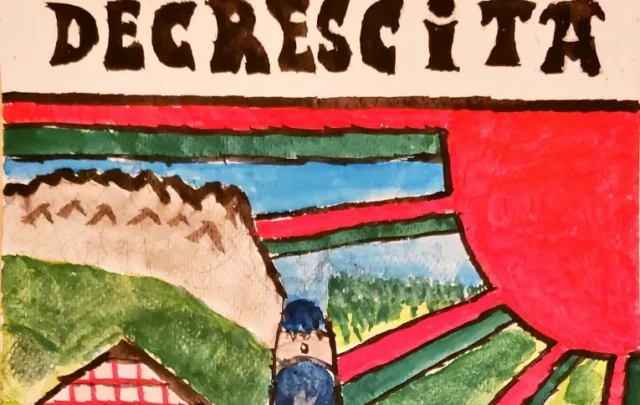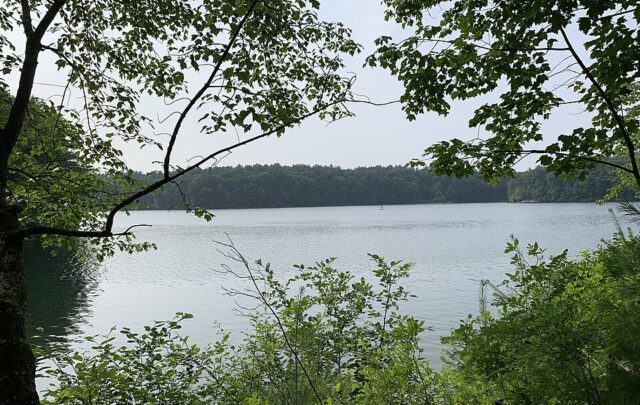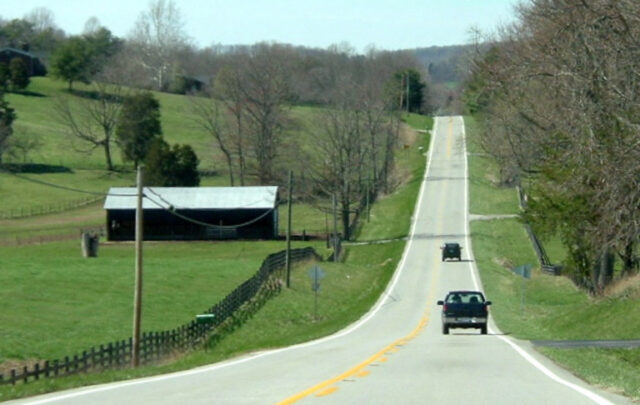
Marguerite Doyle Johnston, a resident of New Orleans’ Upper 9th Ward, did not take part in the multitude of events surrounding Hurricane Katrina’s 10th anniversary that celebrated the city’s resilience. “My neighborhood was left out of the recovery, so I don’t feel like celebrating,” she told DeSmog.
Johnston would have preferred that the money spent on celebrating New Orleans’ recovery be spent on restoring Club Desire, a landmark building in the Upper 9th Ward neighborhood that she has been trying to save and convert into a community center.
In its heyday, many of the city’s most famous artists performed in Club Desire, including Fats Domino and Little Freddie King. Despite Johnston’s efforts to rescue the building, it is slated for demolition later this fall.
VIDEO: Marguerite Doyle Johnston inside Club Desire reflecting on Katrina 10:
According to Johnston, money spent on Katrina 10, the month-long celebration sponsored by the Rockefeller Foundation and other corporate sponsors, is just another example of how the allocation of funds in post-Katrina New Orleans never made it to African American folks like her.
Corporate sponsorship was ever present. Katrina 10 hosted panel discussions, lectures, musical performances, second line parades, and visits from three presidents (Obama, Clinton, Bush).

T-shirt with a list of corporate sponsors at a Katrina 10 year Anniversary event. ©2015 Julie Dermansky
In her 2014 book, This Changes Everything: Capitalism vs. the Climate, Naomi Klein, author of The Shock Doctrine: The Rise of Disaster Capitalism (2007), was inspired by what happened in New Orleans. The book “begins in a very specific time and place. The time was exactly ten years ago. The place was New Orleans, in the aftermath of Hurricane Katrina. The road in question was flooded and littered with bodies,” she wrote on her website.
For the anniversary of Katrina, Klein released the chapter of The Shock Doctrine on New Orleans, post-Katrina, writing:
“Rereading the chapter 10 years after the events transpired, I am struck most by this fact: the same military equipment and contractors used against New Orleans’ Black residents have since been used to militarize police across the United States, contributing to the epidemic of murders of unarmed Black men and women. That is one way in which the Disaster Capitalism Complex perpetuates itself and protects its lucrative market.”
“We can sit and worry about climate change. Or, we can get up and do something about it,” Klein wrote recently. “Our only hope is the rise of mass movements with the combined goals of saving the environment and achieving social justice.”
Signs of the merging of social and environmental justice groups could be found in New Orleans related to Katrina’s 10th anniversary at events held by Gulf South Rising, a coalition of dozens of groups that deal with the impact of climate change on the Gulf Coast region.
The global climate crisis is rooted in economic theories that promote mass consumption of limited resources, laws that maintain inequity, and social hierarchies and governance processes that limit civic participation,” states Gulf South Rising’s website.
VIDEO: Pastor Kenneth Sharpton Glasgow at a Gulf South Rising event in New Orleans:
“You can’t talk about climate change without talking about social justice,” Pastor Kenneth Sharpton Glasgow, a human rights activist and brother of Rev. Al Sharpton, told DeSmog.
Glasgow took part in an event held by Gulf South Rising that was focused on uniting local and regional youth. Discussions about the connection between environmental racism, disenfranchisement, displacement, police violence, and the ”school-to-prison pipeline” were held in Armstrong Park under outdoor tents. Activists shared ideas and held training sessions with the goal of building a sustainable, healthy, and equitable future with justice for all.
Though he respects his brother Al Sharpton, Glasgow thinks a lot of the old-time civil rights activists like his brother are making a mistake by leaving climate change out of the conversation.
“The time to discuss climate change is now, even if it is uncomfortable,” Glasgow insists. Leaving climate change out of the discussion on social justice is like talking about race, but not talking about ”Black” and “White,” he said.
“Gulf South Rising—their slogan [The Seas are Rising and So Are We] seemed perfect to me,” Bill McKibben, founder of 350.org, told DeSmog. McKibben and Sierra Club Executive Director Michael Brune, whose Gulf Coast chapters are part of Gulf South Rising, were in the Lower 9th Ward for the coalition’s second line parade.
Cheri Fortin, a grassroots activist who has been fighting for social and environmental justice since the BP oil spill disaster, woke up August 30 wondering if all the money spent by Gulf Coast Rising and Katrina 10 will change anything. She and other grassroots activists questioned if the money that poured in from bigger NGOs to Gulf Coast Rising also failed to make it into the hands of people who need it most.
“Did we challenge the politicians to step up and protect us? No. Are our life-protecting wetlands being better protected and restored? No. Is there a moratorium on oil and gas infrastructure being built in this climate disaster zone? No. Is housing more affordable and are still-displaced folks on their way home? No. Are we any more safe from or ready for the next one? Absolutely not. So what was it all for? Feel-good moments and chart paper will not save us,” she said.
Her work and that of others in a growing grassroots-based movement is left undone, but she is glad the conversation that connects social justice and environmental justice has, at least, begun.
Green Party presidential candidate Jill Stein echoed Glasgow’s sentiments and some of Fortin’s sentiments at the Rising Tide X Conference, an annual gathering established by local bloggers for all who wish to learn more and do more to assist with New Orleans’ recovery.
“You can’t leave social justice out of the climate conversation in New Orleans or anywhere,” Stein told DeSmog. “We must meet human needs at the same time we meet ecological needs. To propose that people are somehow separate from the ecosystem we live in requires a major cognitive disconnect. It’s like saying you can take care of your heart without taking care of your lungs.”
VIDEO: Jill Stein speaks about racial and environmental injustice in New Orleans:
Beverly Kimble Davis, a New Orleans-based artist, set up her paintings in the lobby of the Andrew P. Sanchez & Copelin-Byrd Multi-Service Center in the Lower 9th Ward, where one of the Katrina 10 events was held. Congresswoman Nancy Pelosi joined New Orleans Mayor Mitch Landrieu and former Louisiana Senator Mary Landrieu at the gathering before laying a wreath at a memorial for those lost in the storm.

Beverly Kimble Davis with her paintings at a Katrina 10 event. ©2015 Julie Dermansky

Congresswoman Nancy Pelosi of California with New Orleans Mayor Mitch Landrieu at a ‘K10’ event at the Andrew P. Sanchez & Copelin-Byrd Multi-Service Center. ©2015 Julie Dermansky
That morning, Davis was tempted not to come at all, but she wanted to make sure those hosting and attending the event would see her work. Her paintings deal with atrocities following Katrina, including the murder and cover-up on the Danziger Bridge.
“I woke up feeling distraught and disturbed,” Davis told DeSmog. “They continue to portray New Orleans as if everything is great, saying ‘we are back’ when many are not back.”
“It is one thing to say the levees are fixed, but you have to deal with the coastal erosion, you have to deal with weather changes,” Davis said. But she is painfully aware that climate change, for the most part, has been left out of the conversation in New Orleans.
This does not surprise her because “the system is set up so the oil and gas industry can do things that are not good for us,” she said.

People leaving a second line parade walk by a “Katrina Parking” sign near the Superdome. ©2015 Julie Dermansky
A blinking LED sign flashing “Katrina Parking” near the Superdome was a reminder of how far the city has come over the last 10 years. People who took part in a second line parade walked by the sign after the parade ended in front of the Smoothie King Center where Katrina 10’s finale event featuring Bill Clinton took place, seemingly oblivious to the irony.

Soledad O’Brien on stage at the Smoothie King Center during the ‘Power of Community” Katrina 10 event. ©2105 Julie Dermansky

Bill Clinton speaks during a free Katrina anniversary event at Smoothie King Center, where the room was less than half full. ©2105 Julie Dermansky
Meanwhile, Louisiana’s coast continues to erode at the rate of approximately one football field-sized piece of land every 39 minutes. And each day Club Desire is one day closer to disappearing. Such facts make Johnston’s fight to restore the club and turn it into a community center — and the voices that gathered in New Orleans to combat social and environmental injustice — more important than ever.

Marguerite Doyle Johnston in Club Desire. ©2015 Julie Dermansky





